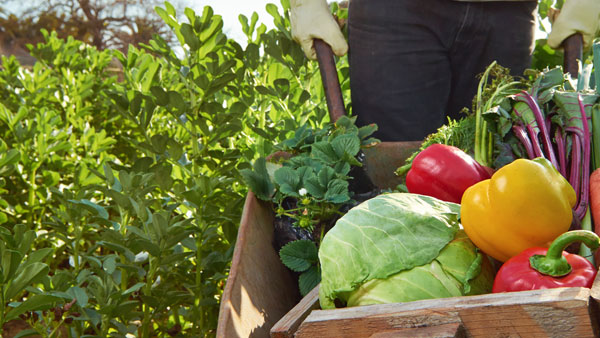4 Sustainability Advancements For Operators

Consumer demand for transparency is influencing all aspects of the foodservice business-menu, packaging, food waste and sustainability. As a result, foodservice directors are working hard to maintain existing sustainability efforts as well as introduce new ones.
Below are 4 key areas of operations where sustainability is gaining attention, and actions that educational institutions are taking to integrate more eco-friendly practices throughout their operations.
Waste reduction and technology
Waste reduction initiatives aren’t new, but the methods by which they are achieved are making advances. Apps and other technology systems help track which items are selling best, for example, so operators can optimize menu offerings and eliminate dishes that are too often going to waste.
These technology solutions help keep track of inventory as well, ensuring that operators only place an order when there’s a need, rather than on a consistent schedule regardless of use.
Another way waste reduction is being championed in some universities is with trayless days-without a tray, students eat only what they can carry with them on their plates. At American University in Washington, D.C., this method was found to reduce food waste by 32%, according to a study published in the Journal of Hunger and Environmental Nutrition.
Resource conservation with updated equipment
Newer equipment makes it easy to save on utility bills and reduce the amount of energy used. For instance, high-efficiency lightbulbs save on electric bills, and heating tables can now shut off once food is purchased (after all, there’s no need to hold an empty heating tray to temperature).
Eco-friendly disposables
Speaking of resource conservation, the use of eco-friendly disposables is also on the rise. Previously, reusable dishes were considered to be the ideal for conservation-minded operations. But newer iterations of disposables are designed from the start with performance and sustainability in mind, using breakthrough technologies to ensure less harmful impact on the environment.
Like all EPS foam cups, WinCup’s Vio¬Æ biodegradable* foam cups use 50% less energy+ and 20% less water++ to manufacture than the average polyethylene-coated paperboard cup with a corrugated sleeve. What’s new-and breakthrough news to diners-is the fact that Vio cups biodegrade* 92% over four years. And since they’re disposable, using Vio cups along with their coordinating lids and straws can reduce water and energy usage in your own kitchen.
Local food sourcing
Finally, directors are increasingly labeling where their food is sourced. Labeling sources has been common in commercial foodservice for a handful of years, and now it’s becoming prevalent in noncommercial settings as well.
As more consumers become vested in how their food is sourced, locality has become more important. According to Technomic’s 2016 Healthy Eating report, 32% of consumers say they’d be more likely to buy and pay more for food and beverages that are local, so it’s critical for operators to keep that in mind when sourcing ingredients. Locally-sourced food translates to less energy used for transporting foods, and economic stability for local farmers and producers. Fletcher Allen Health Care in Burlington, Vermont, for example, sources 37% of its total food budget from local farmers and food producers, including yogurt, fruit and vegetables, cider, and turkey.
Moving forward, sustainability will only continue to be a priority issue in noncommercial foodservice. By keeping updated on eco-friendly trends, directors can work to control costs, satisfy evolving diner preferences, and make better choices for the environment.
+Franklin Associates, LCI, March 2006
++Franklin Associates, LCI, 2011



